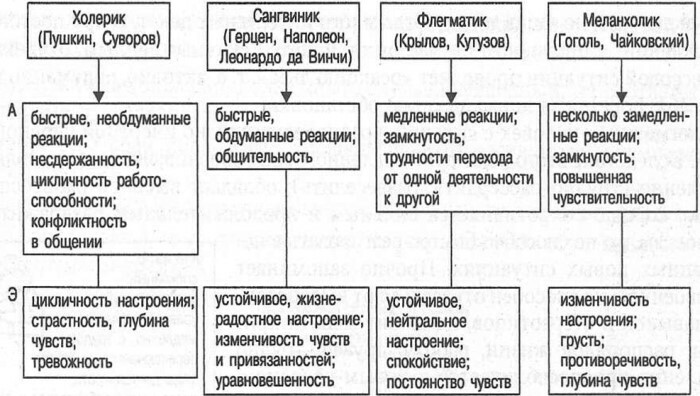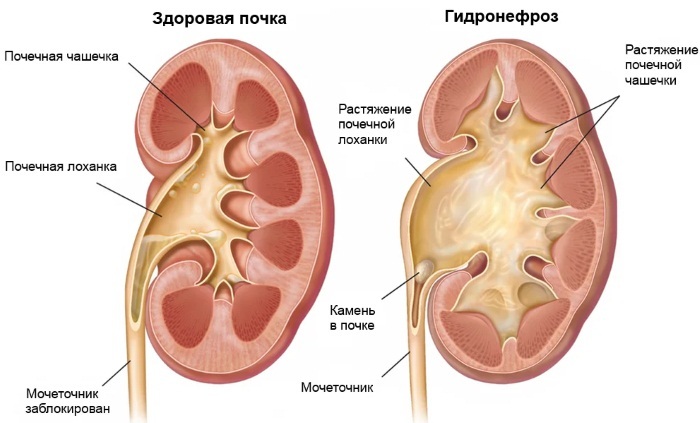Content
- Views
- Hemodynamic
- Microembolic
- Thrombotic
- Symptoms and Signs
- Causes
- Diagnostics
- Treatment methods
- Drug treatment
- Operation
- Stenting
- Angioplasty
- Carotid endarterectomy
- Potential consequences and complications
- Video about stenosis of the vessels of the neck
In modern medicine, a condition such as stenosis of the vessels of the neck or stenosis of the carotid artery is quite common. Such conditions are characterized by a narrowing (full or partial type) of the vascular lumen.
The disease is pathological in nature and can lead to a decrease in the blood supply to the human brain. If you do not pay attention to the symptoms in a timely manner and do not start treatment, then against the background of such a stenosis, the brain cells will no longer receive the normal amount of nutrients, as well as oxygen. That is, ischemia may develop.
There is also a risk of subsequent development of encephalopathy. If an acute blockage occurs and a person suffers from a stroke, then this is considered one of the most severe consequences of this pathology. The disease is considered very dangerous, since in 2 out of 3 cases there is a complication in the form of discirculatory encephalopathy or acute
circulatory disorders in the brain. Most often, elderly men suffer from pathology.Views
Stenosis of the vessels of the neck has a specific classification. Most often, this condition develops against the background of certain pathologies.
| Type of disease | Description |
| Obliterating endarteritis | This is an allergic disease of an autoimmune type, against the background of which the lumen of the vessel begins to gradually narrow. Ultimately, a complete blockage may occur. This is due to the accumulation of immune complexes in the walls of the vessel. |
| Atherosclerosis | As a rule, it appears with disorders of lipid metabolism. Because of this, plaques form in the vessels, which begin to clog them. |
| Nonspecific aortoarteritis | Also, the pathology is called Takayasu's syndrome. It is an autoimmune type of disease that predominantly affects the aorta. As a result, the patient is diagnosed with too high a risk of blood clots. |
| Fibromuscular dysplasia | This is a systemic lesion, when elastic fibers begin to lack in the connective tissues of the vessels. Also, fibrous and muscle tissues begin to grow rather quickly. |
| Congenital anomalies | We are talking about violations of the structure of the vessel, which are diagnosed in a person from birth. |

Also, vascular stenosis may differ depending on the mechanism of development of ischemic-type changes. In total, there are 3 types of narrowing of the carotid aorta.
Hemodynamic
With this form, blood flow decreases, and the vessel narrows by about 75% or more. Against the background of this form of pathology, discirculatory encephalopathy develops.
Microembolic
With this type of vascular stenosis, microthrombi detach from the vascular wall, which has already been deformed before. As a result, blockage of smaller vessels occurs and the person suffers from transistor attacks.
Thrombotic
In this form, rather large blood clots develop. They can completely block the lumen and provoke a massive stroke. As a rule, the traumatic form is characterized by the fact that such clots appear mainly in the area of the common carotid artery. This is the most dangerous form of the disease, which, according to statistics, is more often fatal.
Symptoms and Signs
Stenosis of the neck vessels, the symptoms and treatment of which are discussed in the article, does not manifest itself in most patients, and people do not notice changes in their health status. However, this only indicates that the vasoconstriction is not yet so pronounced and the thrombus has not completely blocked them. The first sign of stenosis is neurological disorders of the reversible type. In medical practice, this condition is called a transient ischemic attack.
TIA can develop when blood flow to the brain has been temporarily cut off. Such a neurological condition can last no more than a day. But it is extremely important to pay attention to such a syndrome, since it is the first sign that a stroke may soon occur. If a person is provided with medical assistance on time, then a dangerous condition can be prevented.
The manifestations of a transient ischemic attack include:
- severe headaches;
- dizziness;
- loss of balance;
- severe weakness;
- numbness in the limbs (as a rule, it develops on only one side);
- face recoloring;
- blurry speech;
- loss of vision in one or both eyes.
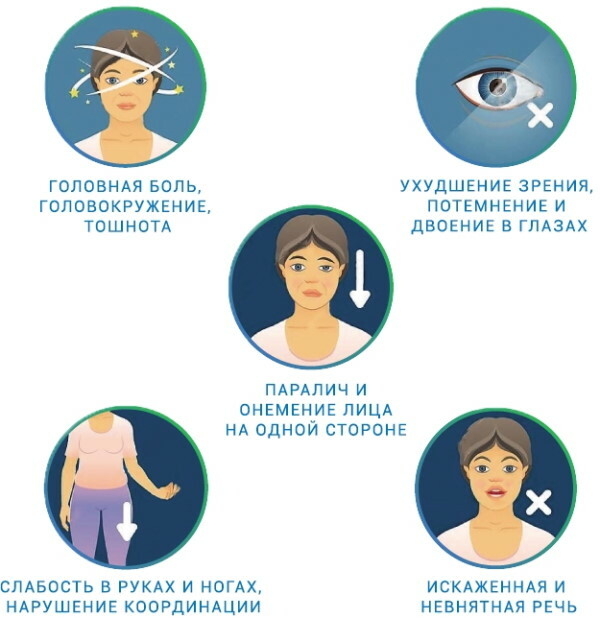 There are no milder symptoms that could predict a transistor ischemic attack, since this condition occurs rather quickly. As a rule, after an attack, a complete recovery of the human body occurs. But if he suffered from a stroke, then there is a high risk of irreversible neurological disorders. It all depends on how much brain tissue was lost during the attack.
There are no milder symptoms that could predict a transistor ischemic attack, since this condition occurs rather quickly. As a rule, after an attack, a complete recovery of the human body occurs. But if he suffered from a stroke, then there is a high risk of irreversible neurological disorders. It all depends on how much brain tissue was lost during the attack.
In some situations, after a stroke, a person has problems with vision, speech, or may be completely paralyzed. With extensive stroke, there is a risk of death.
According to statistics, most people who had a stroke against the background of vascular stenosis did not have any preliminary signals. The only way to timely determine the presence of such a deviation is a complete examination. Some people recover completely from a stroke, but only if the blockage in the arteries has been relieved within 4 hours of the first symptoms.
Causes
The carotid artery in a healthy person has a very elastic structure. Its inner lining is smooth, which is why blood clots cannot fix on it. Against the background of aging, high blood pressure and other factors, micro-ruptures of the inner lining of the artery occur. Cholesterol begins to be deposited on them and plaques gradually appear.
They are a substance of a heterogeneous type of curdled consistency, which gradually hardens. Such a structure is obtained by atherosclerotic plaques due to the deposition of cholesterol and its subsequent calcification. Over time, connective tissue also grows in the thickness of the plaque itself. Against this background, the lumen of the artery narrows. As this deviation develops, the walls of the arteries become denser.
The mechanism of development of the state of stroke in the case of vascular or carotid artery stenosis develops according to several schemes:
- The plaque gradually begins to enlarge, which leads to narrowing of the arteries. As a result, a complete blockage occurs, the blood ceases to flow to the brain.
- There are irregularities on the surface of the plaque on which blood clots can form. In this case, it is they who lead to clogging of the artery and a change in the blood supply to the brain.
- If there is a blood vessel hemorrhage, the plaque may crack or even rupture. In this case, blood clots or a particle of cholesterol that is on its surface enter the bloodstream and pass through the artery to the brain.

It is difficult to say exactly why vasoconstriction occurs, since a similar condition is still being studied. So far, doctors are only sure of hereditary causes. Everything else is related to risk factors. For example, people suffering from obesity, arterial injuries, and diabetes mellitus are most prone to stenosis of the neck vessels.
Smokers, people with sedentary lifestyles and the elderly are more likely to experience similar problems. Stenosis can be caused by too high blood cholesterol levels. Therefore, as a preventive measure against such a deviation, doctors recommend adhering to a healthy lifestyle, moving more often, monitoring your diet and avoiding imbalance.
Diagnostics
Stenosis of the neck vessels (symptoms and treatment are interrelated) requires a comprehensive diagnosis, that is, several examinations at once. The fact is that it is not always possible to find places of service.
Therefore, most often doctors prescribe 3 main types of examination:
- Ultrasound. This is the main method for diagnosing vascular constrictions, since modern equipment is used during the examination. During the ultrasound, the doctor receives information not only about the presence of a possible narrowing, but can also determine the degree of vascular deformation. In addition, it is a non-invasive diagnostic method, so it is completely safe and does not cause painful sensations in the patient.
- MRI or CT.
-
Angiography. During the examination, a special contrasting compound is injected into the patient's body. The angiography itself is performed using a sophisticated diagnostic apparatus that allows you to track blood flow throughout the body and notice even the smallest abnormalities.
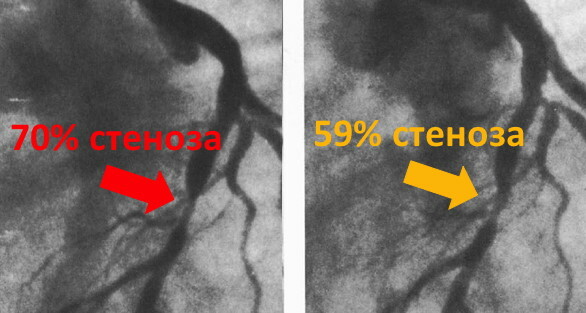
Also, a blood test may be required for diagnosis if there is a suspicion that the cause of the narrowing is developing atherosclerosis. You can get a referral for diagnostic measures at a polyclinic by registration. If it takes too long to wait for the necessary procedures, then some people prefer to contact paid private centers. The cost of a tiered survey depends on the region.
Treatment methods
Treatment of stenosis of the vessels of the neck is selected based on the symptoms and causes of such a disorder. Also, the doctor pays attention to how quickly the disease progresses. The sooner a specialist can identify such a pathology, the easier it will be to stop it. In the later stages, only surgery is possible.
Drug treatment
The use of drugs will be effective if the stenosis is still at an early stage of development and there are no obvious symptoms. However, you need to be prepared for the fact that a fairly extensive list of drugs will be required for drug treatment.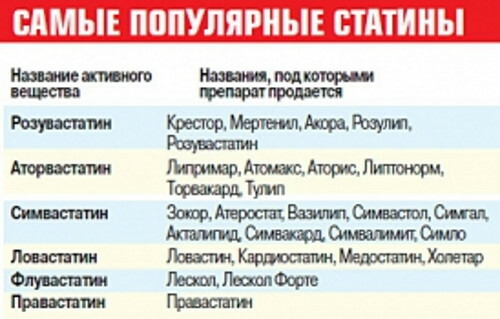
Most often, doctors prescribe antioxidants, vasodilators, statins, antidepressants, and drugs belonging to the fibrate category. With this method of treatment, pain is quickly relieved and the progression of the disease is stopped. However, to be more likely to rule out the risks, a specialist may recommend surgery.
Operation
If during the diagnosis it was possible to establish that the vasoconstriction and their overlap had already reached 70% or more, then in In this case, it is possible to improve a person's condition and save his life only through prompt interference.
Also, surgical intervention is considered a mandatory procedure if the patient suffers from recurrent transistor attacks or with an occlusion that is more than 50%. Such treatment may be required after a stroke caused by pathologies of the carotid arteries. Also, the operation becomes the only possible method of treatment if drug therapy has not given any effect.
There are several options for such operations:
- Carotid endarterectomy. The procedure consists in cleaning the vessels from the formed plaques during their curettage.
- Angioplasty. During this surgical intervention, the specialist increases the lumen of the vessel using a special catheter.
- Stenting. During this procedure, a special frame is installed, which allows you to straighten the narrowed section of the vessel.
The specific type of operation is determined solely by the doctor on an individual basis, since each of the types of pathology requires different actions.
Stenting
The most popular type of surgical intervention in the treatment of vascular stenosis is artery stenting. It is important that the surgeon who performs this procedure has the appropriate qualifications, since the operation is not considered simple. During the surgical intervention, it is required to insert a special stent, which is a metal frame installed directly into the artery.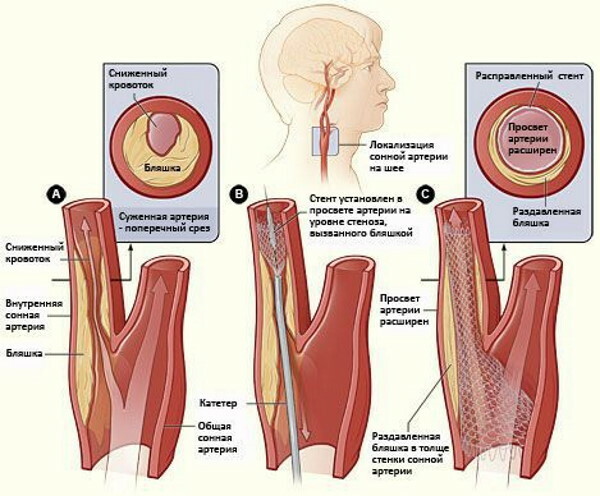
After installing the stent at the site of narrowing, it is deployed and it gradually begins to expand the vessel walls. This design allows you to very accurately determine to what level exactly the expansion is required.
The stent is then left in the artery. The first days after such a surgical intervention, the patient may feel uncomfortable, since a change in blood flow occurs in the body. However, very quickly a person gets used to the presence of such a stent and returns to his usual way of life.
The likelihood of a stroke in this case is excluded. But it is also necessary to prevent the re-development of stenosis, so it is important to follow all the recommendations of the doctor, who can make some adjustments to the patient's lifestyle. Also, in the postoperative period, an additional visit to a neurologist may be required.
Angioplasty
The procedure is applicable for many diseases. During the procedure, the surgeon does not make incisions. Instead, a balloon catheter is inserted into the damaged artery through a small puncture to widen the vessel lumen. If the patient is diagnosed with mild stenosis, then this may be enough to completely restore the vascular lumen.
In more complex situations, angioplasty can be performed in conjunction with stenting. In this case, the stent is introduced using a balloon. After such a procedure, the risk of re-development of stenosis is minimized.
But sometimes the accumulation of plaques is too large and this does not allow the balloon to be inserted. Then laser angioplasty is performed. First, the doctor removes the plaque using a laser and then performs stenting. In this case, the risk of recurrence of stenosis or other postoperative complications is also reduced.
Carotid endarterectomy
Neck vascular stenosis, the symptoms and treatment of which are discussed above, is less commonly treated with carotid endarterectomy.
The procedure is carried out as follows:
- The doctor administers anesthesia.
- After that, an incision is made in the area of the grulino-clavicular-mastoid muscle with a length of no more than 5-10 cm.
- Next, the surgeon selects common as well as external arteries and raises them above the surrounding tissues using special holders.
- The next step is to perform a test. To do this, the surgeon independently compresses the lumen for 3 minutes. At the same time, the patient is asked to perform certain actions (for example, to count to 10, move their legs, or shake hands). If during such a test there are no signs of circulatory disorders in the brain, then the vessel is opened and endarterectomy is performed. If the patient's condition has deteriorated greatly, and he could not complete the tasks, then a temporary shunt is inserted into the lumen.
During surgery, plaque can be removed in different ways. For example, a doctor can make a longitudinal incision. Then the plaque can be easily peeled off the outer wall. The eversion technique is also used.
In this case, the specialist cuts the carotid artery across and inverts it. In such a situation, the plaque moves away from the vascular wall by itself. At the final stage, the vessels are sutured. In the case of a longitudinal dissection, if it is necessary to expand the lumen, it is also necessary to install a special patch in the section. If the operation is performed using the eversion technique, then the patch is not necessary.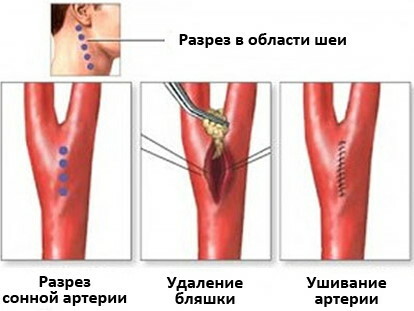
After the artery is triggered. The doctor must perform a second ultrasound without fail to make sure that the blood flow is working properly. Only then can the wound on the neck be sewn up. For this, special absorbable sutures are used that do not have to be removed. Additionally, the doctor may install a drainage tube with a pear. It allows you to control bleeding. The drainage tube can be removed after 24 hours.
Neck vascular stenosis (symptoms and treatment should be discussed with a doctor) can be treated with minimally invasive, i.e. endoscopic, surgery. In this case, the patient does not suffer from serious consequences and gets used to the presence of the stent much faster. In addition, the endoscopic method is the safest.
In more complex situations, prosthetics may be required. The procedure consists in the fact that a large section of the vessel is surgically removed and a prosthesis is installed in its place, which remains in the human body.
In some cases, reconstructive operations are allowed. They allow you to help a patient suffering from birth defects, that is, if the vascular stenosis is an abnormality. In the course of such an operation, the deformed section is removed, and the remaining part is straightened and connected.
Potential consequences and complications
Stroke is the death of cells (neurons) in the human brain. According to statistics, stroke is becoming the 2nd most popular cause of death in people (myocardial infarction ranked 1st). More than 2 million people died of strokes in 2005 alone, according to health data. human. About 80% of stroke conditions are diagnosed against the background of the fact that blood flow through the arteries stops. As a result, the brain does not receive the necessary nutrition.
15% of strokes develop due to vascular rupture. This provokes intracranial hemorrhage, which is also called hemorrhagic. More than half of ischemic strokes develop against the background of stenosis of the arteries that transmit blood to the brain. 20% of such outcomes are recorded due to thrombus formation in the region of the heart.
Accordingly, we can conclude that stenosis of the neck vessels is a rather dangerous condition. Especially high mortality rates from such strokes in Russia (higher than in other countries). From medical practice, it follows that if patients suffer a stroke, then every third person dies within the next month. Within 1 year, the mortality rate is 50% for every second patient.
The human brain constantly needs a stable and adequate blood supply. It depends on how active and qualitative the metabolic processes occurring in the brain will be. It will also be useful to know that the weight of the human brain is only 2% of the total mass.
At the same time, it consumes more than 20% of oxygen, which is carried by red blood cells circulating in the blood. If there was a short-term strong vasoconstriction, then this sharply reduces the flow of blood, and, accordingly, oxygen to the brain.
If a person has serious changes in the carotid artery, then this can provoke an acute violation of cerebral circulation. Much depends on which area of the brain the pathological focus is located in. If the problem occurs in the left internal carotid artery, then the patient may have a complete speech disorder. At the same time, sensitivity disorders appear.
Therefore, stenosis of the vessels of the neck, in particular the carotid artery, is an extremely dangerous condition. The problem is that at the initial stages of development, patients do not have pronounced symptoms. Therefore, people often seek treatment when the gaps are already narrowed enough and all that remains is to perform the operation. However, in any case, in most situations, the outcome is favorable.
Video about stenosis of the vessels of the neck
Diseases of the carotid arteries. Why are they dangerous and how to recognize:

